Sweden, especially its capital, Stockholm, is a very famous “green” city. Indeed, Stockholm’s green infrastructure wedges system is one of the most recognized and cited around the world because of the significant ecosystem services that it provides and because it acts as a source of natural biodiversity for an urban environment. These wedges are remnants of old royal and nobility’s parks and forests. Stockholm was also an initiator of the world’s first Urban National Park (27km2 in size).
However, “ordinary” urban landscapes in Stockholm and other Swedish cities were created during the era of the multifamily “People’s Home” (1940-1959) movement and the “Million Program” (1960s- mid-1970s) later in the end of the 20th century, and employed quite a simple model for urban green development. A global, modernistic, prefabricated design was based on intensively managed lawns (as a major “matrix” of neighborhood green “canvas”) with some scattered trees and decorative shrubs and perennials (see photos below). There is a sharp edge between ”real nature” and this “designed nature”. By “real nature”, we mean native ecosystems (for example forests or grasslands) that developed as the result of natural processes, with no or limited human intervention.

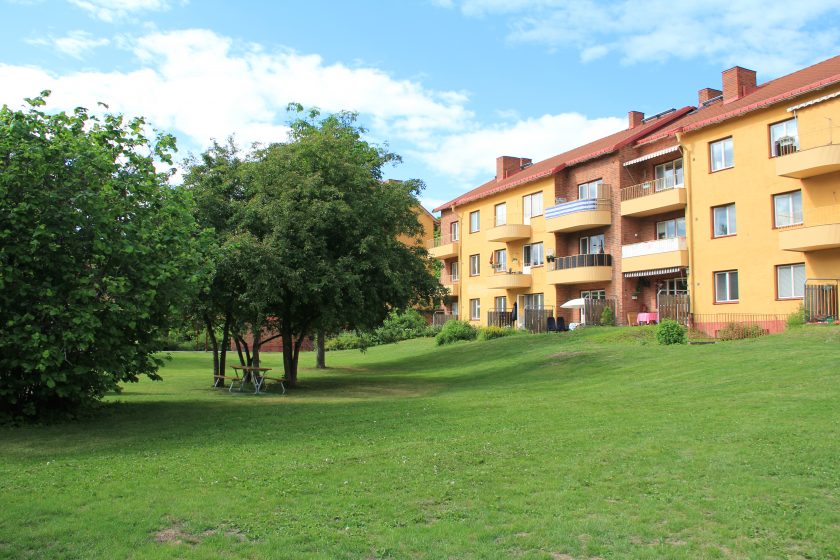
The tidiness and clear visibility of management are the main pillars of today’s vision of urban green areas in the majority of Swedish cities. Why are the most artificial, expensive resources and energy-consuming elements, such as lawns (or groups of trimmed exotic decorative shrubs) understood as real, truly “green”, and, ultimately, a substitute for the real nature?
One of the solutions for returning real nature to our urban neighborhood is creating a new landscape architecture style—which I call biodiversinesque—which will employ biodiversity and natural processes as major design tools that will make nature-based solutions clearly visible for urban citizens. Since lawns cover the most significant parts of urban green areas, searching for an alternative lawn is very timely.
In our ongoing transdisciplinary project “Lawn as an ecological and cultural phenomenon: searching for sustainable lawns in Sweden” we found that 51.8 percent of total urban green areas in Swedish cities are covered by lawns. Lawns are both a source and a sink for greenhouse gases. Based on our research, we concluded that grass mowing was the main contributor to greenhouse gases from most lawns. Reduced mowing frequency and the use of electrified machinery can lessen the carbon footprint of lawns.
We found out that majority of people love lawns and see them as a “must have” trivial element of green areas. However, even with this attachment to conventional lawns, a high number of dwellers would like to see more biodiverse meadows in their neighborhoods.
Swedish municipalities are also quite cost-conscious; therefore, they are open to alternatives to traditional lawns.
In the spring-summer of 2016, we established several alternative, experimental types of lawns in Ultuna Campus, Uppsala (Swedish University of Agricultural Sciences) and in Sundbyberg public park at the request of Sundbyberg Municipality (see photo below). We found inspiration for Swedish alternative solutions in rethinking and re-evaluating the history of the Lawn within a Western vision of the relationship between Man and Nature. The answer to how we can change people’s attitude towards the acceptance of “real nature” can also be found within its historic precedents.
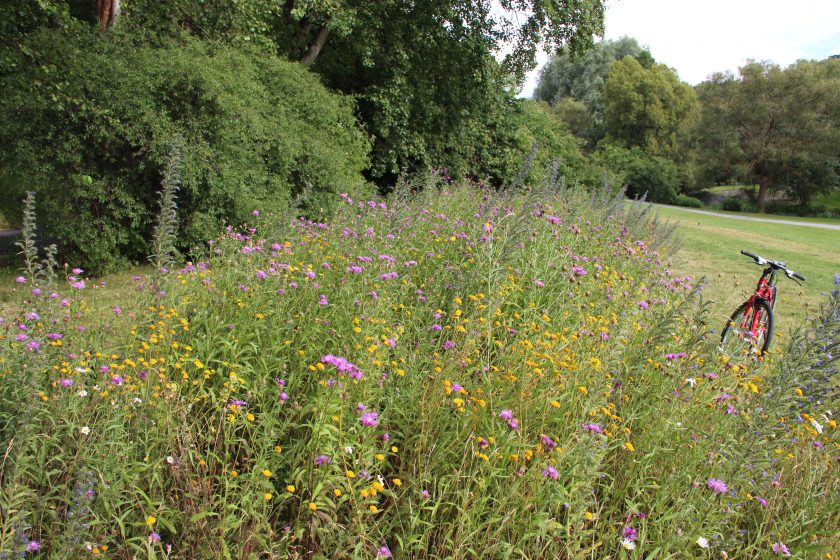
In Ancient Greek culture, nature had a very rich inner life animated by the spirits of the mountains and valleys, lakes and streams. Nymphs of flowers—anthousai—and nymphs of trees—dryads—inhabited forests and meadows. Architectural monuments and houses were included in surrounding landscapes and there were not too many disturbances to nature. People admired flowers in natural grasslands and forests. There were no gardens as they exist today. Education and exercises took place in sacred groves and valleys.
Pragmatic Romans completely changed attitudes to nature. Now, the World of Nature and the World of Gods had become separate spheres. From this particular moment, the predominantly materialistic view of the natural world developed in Western society. It was the starting point of a growing detachment from nature and “Withdrawal of spirits from human awareness”. Nature was seen as something “out there” to be viewed and exploited by human technological power. Roman poet Publius Papinius Statius (45-96 AD) expressed a pretty clear departure from nature when he started to associate “wild” with “unlovely” (Naydler 2006). Since Roman times, the concept of beauty has been linked with the concept of the human “taming” (training) of nature and human aesthetic control. In this sense, topiary—the art of clipping plants—introduced by the Romans is the finest concept of human ownership of nature. Through the practice of topiary, plants were made “faceless” and, inevitably, lost their spiritual essence (see photo). Roman gardens became specially arranged places for human well-being and pleasure, and reinforced human power over the natural world. Such a turn mirrored Roman culture’s basis on slavery and the master-slave relationship, which also extended to human dealings with the natural world. Even if there is no direct evidence that lawns were used in Roman gardens, ideologically, lawns—artificially created elements which need a tremendous amount of maintenance—could fit into Roman culture extremely well.
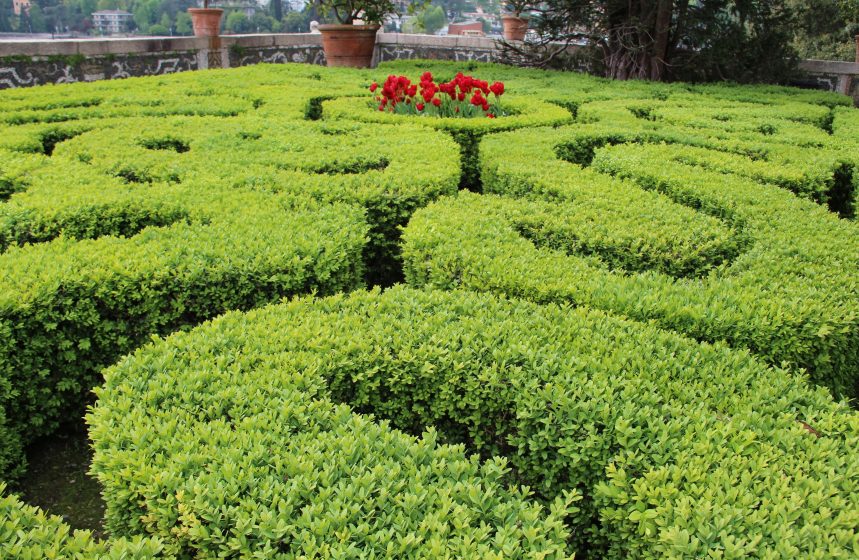
Most researchers believe that the lawn, as a purely decorative, artificially-created plant community based on grass species (namely, a “velvet green carpet”), first appeared in medieval gardens. Green grass strips were used in small amounts (in turf benches and some pathways). Medieval enclosed formal gardens symbolized God’s soul triumphing over Nature (since gardens were created by humans, which are themselves created in God’s image). However, medieval people still felt that nature was an alive phenomenon full of spirits. Virgin Mary, the spiritual patron of every medieval garden, was interchangeable with Lady Natura. That is why flowery meadows were quite a common feature at that time. In this case, freely flowering meadows (which were also available in nearby nature) were not about control, but about the enhancement of natural beauty in a religious direction (each plant was symbolic and connected to the Bible). This particular period of medieval flowering meads came to be an inspiration for modern, grass-free (tapestry) lawns. This concept of lawns, comprising specific, mowing-tolerant, low-growing plants instead of grass, was introduced by Lionel Smith in the U.K. at the beginning of the 21st century.
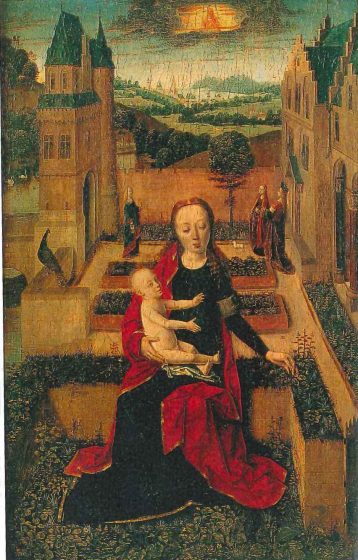
The subsequent history of a Western vision of Nature continued the Roman’s concept of human ownership over nature. In the Renaissance, a garden displayed the classical culture of its owner and demonstrated human sovereignty over nature. In baroque formal gardens, lawns (decorative parterres), which departed from nature even further, started to be one of the essential features. Regularly cut green carpets emerged as perfect elements to serve human desire and express aesthetic ideals. From this particular point of view, green areas started to become the province of architects and were designed on drawing boards.
Interestingly enough, the modern vision of a global landscape is based on a Picturesque convention of using extended pastureland and lawns, which seemed so close to nature. However, this vision was mistaken for ecological quality, and this conception of an “ideal” landscape was accepted as a “real nature”, first in England and, later, in the rest of the world (e.g. Stowe Park). It is not surprising that modernistic urban landscapes follow this Western vision of Nature as something distant from people, and accept that it is a “right” attitude to create and design this “lovely” nature subservient to humans.
The results of the social studies of our LAWN Project in Swedish multifamily housing areas were not so different from U.K. or U.S. social studies’ findings in private gardens. People become attached to conventional lawns over generations, as they grow up amongst “designed” nature. Three alternative versions of lawns (grass-free lawn, a meadow-like lawn surrounded by mown strips (“cues to care”), and flowering annual pictorial meadows) received a range of opinions. For example, in some neighborhoods, grass-free lawns were considered very attractive. However, people stated that they were afraid of walking on such lawns because they worried about destroying nice flowers. Swedish stakeholders of multifamily housing areas advised placing meadow-like lawns in the periphery of housing areas. Meadows framed by mown lawns received quite a few positive responses.
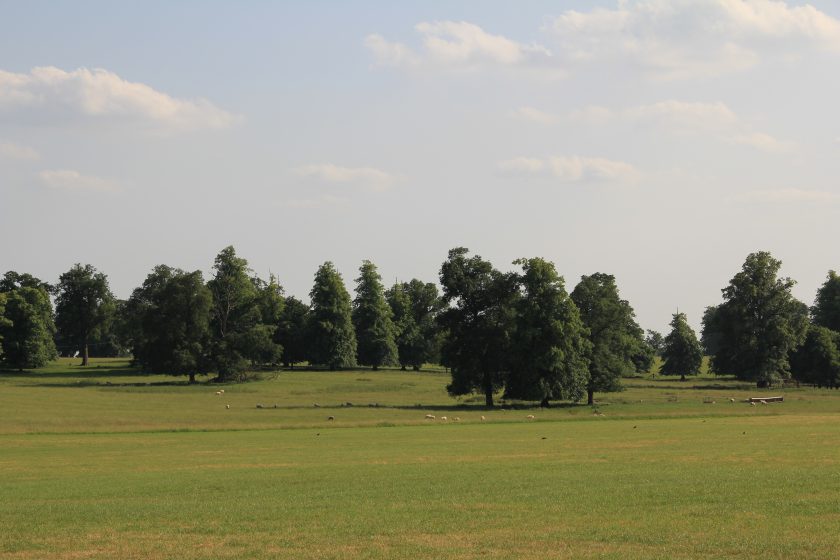
Our vision of alternative lawns for Sweden was inspired by old, traditional Lövangar—trees within the meadow. Even though Sweden still has a significant number of native ecosystems, the amount of grasslands (natural and semi-natural) has dramatically declined. Our vision of alternative lawns is to create biodiverse, aesthetically pleasing, and cost-effective plant communities based on the diverse native Swedish flora. Such biodiverse lawns can help to return real nature into the urban environment. We work closely with the Swedish firm Pratensis—a pioneer in the conservation of natural Swedish grasslands that is promoting the use of biodiverse alternative solutions for lawns. The firm collects seeds only from natural plant communities within different parts of Sweden. Pratensis is grounded in local plants that are extremely cost-efficient and suitable for our northern climate. Our suggestions for biodiverse meadow-alternatives to lawns correspond to the character of meager Nordic nature, with its modest color and texture (see photo below). Such meadows were used and seen as beautiful by many Swedish generations of peasants and also in the 1930s by dwellers of Stockholm’s functionalist landscape school, which used meadows instead of lawns.
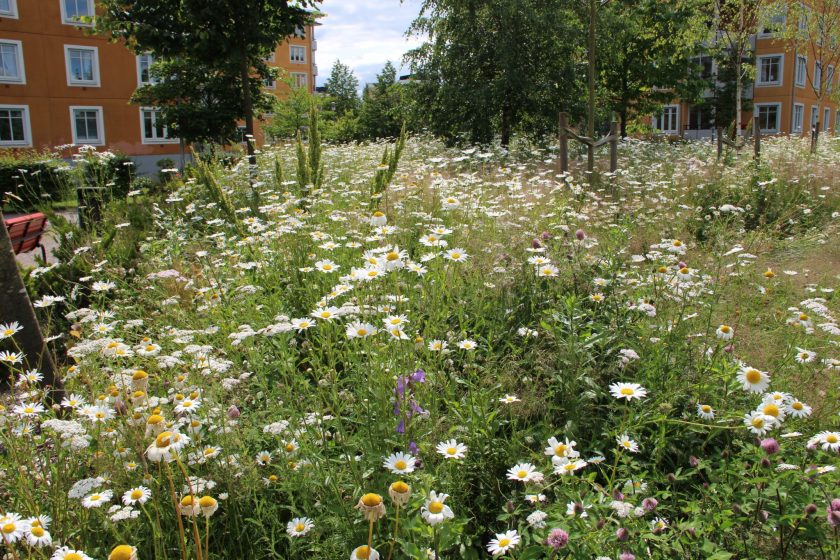
Our vision of creating meadows with only native plants contrasts with modern British and U.S. approaches of promoting a more “pictorial” aesthetic for alternative plantings. The British and U.S. argument asserts that modern people will accept naturalistic plantings in urban environments only if they have more color and texture (for example, by planting exotic flowering plants from prairies or Asian grasslands). It is clear to me that this is very much a continuation fo the Western trend and vision of “taming” nature, of creating “improved” and “lovely” nature. Such a vision insists on the inability of modern man to love unvarnished nature, with its weeds and untidiness. Why not to try to find a solution wherein people appreciate nature as it is? In its “wild” originality?
The question which needs to be decided in the nearest future is: How can we design “wild” nature in urban environments? How can we teach urban dwellers without special knowledge to appreciate “wild” plant communities next to their houses, and not to be afraid of them—that they can experience grass-free lawns by stepping or sitting on them?

Results of our LAWN project social surveys have shown that people are tired of the monotonous lawns that surround them. Actually, people are ready for variety in green areas. We believe that our new types of alternative lawns, based on native plants and models of plant arrangements which mimic native plant communities, can be one of the types of “designed real nature” in urban environments. Why not suggest, at the level of neighborhood design, to arrange different solutions that include conventional lawns (recreational and sport field) and different ranges of “mixed nature”, such as “cues to care” (combinations of meadow-like lawns framed by regularly cut lawns), as well as “designed real nature”, such as grass-free lawns, and biodiverse meadows?

The most important part of this new paradigm’s development for designing urban “real nature” is experimentation and trying new solutions to ascertain what is suitable for each country and even for a particular neighborhood.


Maria Ignatieva
Uppsala








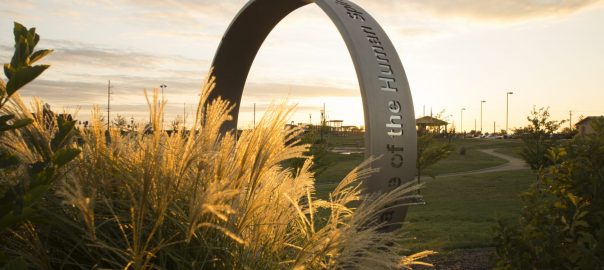
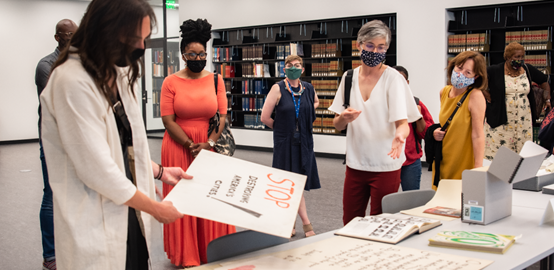
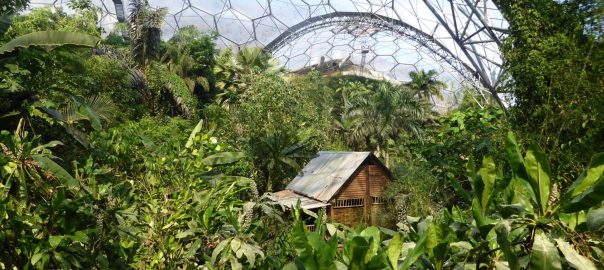
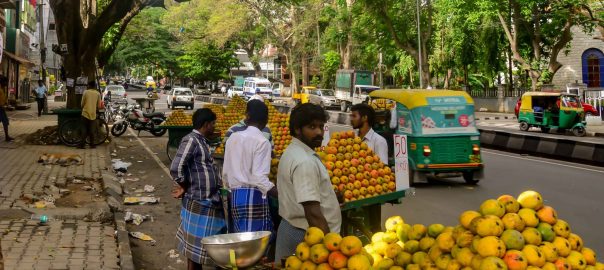
This is an amazing read and something very few people here in the US are starting to pick up on, I work as a gardener for middle class neighborhoods and have been experimenting with turning lawns back into meadows. This is a gold mine of information and valuable ammunition for changing the way people think of beauty in nature. Thank you!!!
Hello Maria, Thanks very much for this. As someone from the UK I can say that we, as a culture, are perhaps even more attached to our biodiversity starved lawns – and I absolutely agree with you that it, at its heart, emerges from an ingrained, controlling attitude towards ‘nature’. My own research is in the application of ‘non-human centred’ design in urban environments, so this is very relevant. However, my family also owns a small farm (or croft as we call it in Scotland), and I intend to plant up at least one of our fields with native flower meadow mix. Your insights will be useful in this regard. Moreover, I intend to promote and push for this agenda (conversion of non-recreational lawn areas of which there are many, to flower meadows). Thanks for the insights and inspiration.
Many thanks Mark! This reference is really useful! I will also send you the results of our research on Swedish lawn carbon sequestration and also energy use (it was part of our interdisciplinary LAWN project).
Maria – enjoyed the essay. In the states, most all lawns are a source of GHGs. Especially if irrigation and fertilizers are involved. And – we do not talk about nitrous oxide gas given off by fertizers, which is 300 times worse than carbon dioxide. See https://edis.ifas.ufl.edu/pdffiles/UW/UW32400.pdf